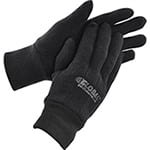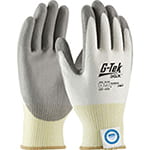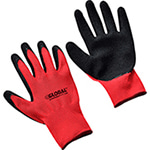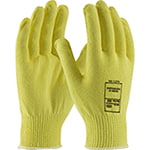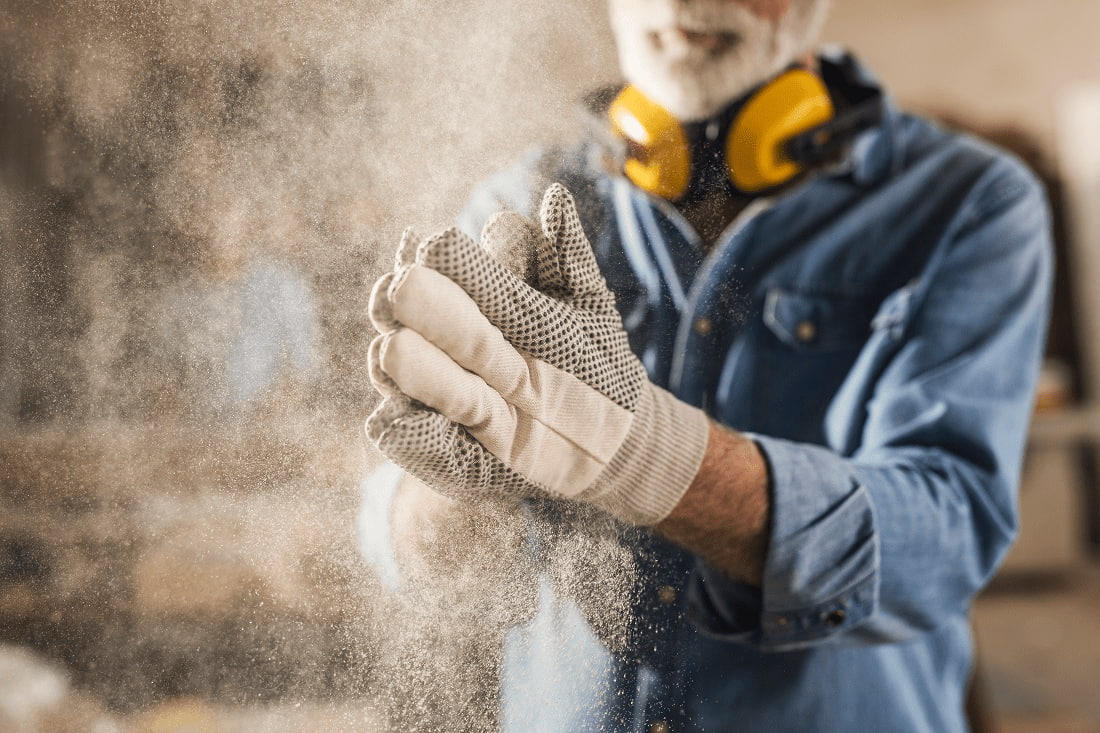The liner is the base material the glove is made of and provides the strength of the glove. All coated gloves will have a tight fit, but some fabrics will stretch more than others and not conform to the hand over time and use. Others fit very tight like a second skin.
According to the US Bureau of Labor Statistics, hands are the second most frequently injured body part. In 2020 alone, there were over 102,000 reported injuries with cuts & lacerations being the most common injury by a large margin.
- Gloves are too hot and make their hands sweaty.
- Forgot them in their vehicle, at home, in a tool box, etc.
- Loss of fine motor coordination (can’t grab a nail from pouch or thread a nut onto a bolt).
- They are uncomfortable and/or do not fit correctly.
- Hard to use tools and machinery.
- No one else is wearing them, so they don’t want to look out of place.
Which one is an issue for your people?
The US Department of Labor Occupational Safety and Health Administration (OSHA) standard 1910.138(a) requires the use of “appropriate hand protection when employees’ hands are exposed to hazards such as those from skin absorption of harmful substances; severe cuts or lacerations; severe abrasions; punctures; chemical burns; thermal burns; and harmful temperature extremes”. So, it’s not enough to just wear gloves—workers need to wear the right gloves for their specific jobs. Let’s look at the factors that you should consider when choosing the right glove.
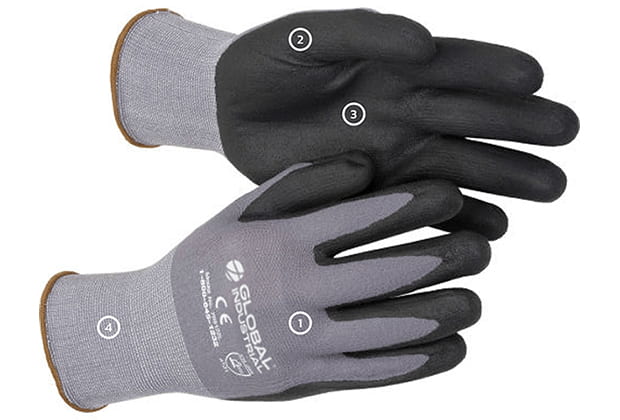
The basic coated glove has 4 primary attributes that give the glove it’s particular performance and dictates the proper applications that it should be worn in:
Common coatings and the advantages they give you include:
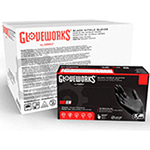
NITRILE
- Excellent dry grip.
- Thicker coating offers superior resistance to snags, cuts, punctures, and abrasion.
- When enhanced with a foam coating, it offers very good grip when handling chemicals including oils, petrochemicals, fuels, andmost acids.
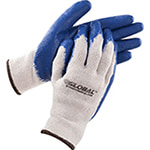
LATEX
- Offers good dry and wet grip water-based liquids, animal fats, caustics, acids, and alcohols) as well as resistance to snags, cuts, punctures, and abrasion.
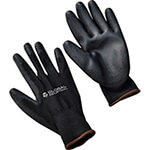
POLYURETHANE (PU)
- Offers good abrasion resistance and dry grip, and fair grip in slightly wet conditions. PU properties allow for a very thin coating, which results in excellent tactile sensitivity and dexterity.
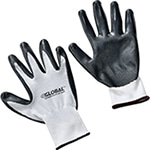
SMOOTH
- Available in a variety of polymers such as latex, nitrile, PVC, neoprene and polyurethane.
- Smooth coatings provide the wearer an excellent dry grip. Liquids will not absorb into the coating, which will keep the hands dry
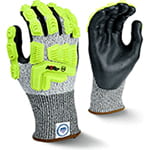
FOAM/MICRO FOAM
- Available in nitrile, latex, and PVC
- Designed to channel liquids away to allow better handling in wet and dirty conditions.
- Provides excellent grip and tactile sensitivity in dry applications
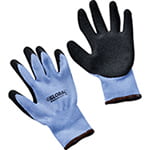
CRINKLE
- Latex crinkle coatings are designed to channel away liquids to allow a better handling in excessively wet and dirty conditions.
- The thicker coating provides additional protection against cuts and punctures.
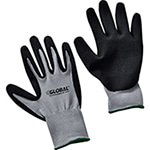
SANDY
- Premium sandy finishes enhance abrasion- and cut-protection while providing an excellent grip in wet and rugged applications.
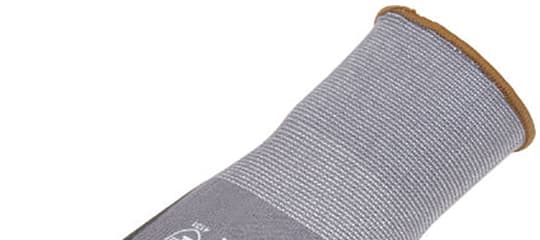
Most gloves are offered in a range of 7- to 18-gauge, and the higher the gauge number the thinner the glove material. Typically, the higher the gauge the more expensive the glove.
CUT PROTECTION
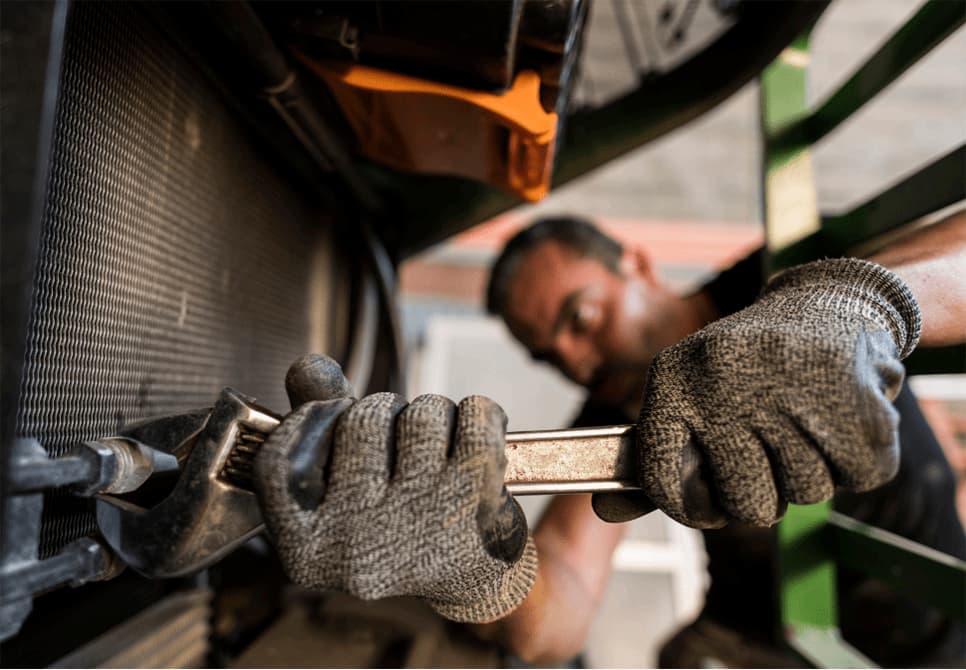
The final attribute determines a glove’s protection against cuts. There are two primary cut protection standards: The ANSI-standard (American National Standards Institute) used in the U.S. and the European EN388 standard. The ANSI testing procedure is comprehensive and the different cut levels allow for the use of gloves that fit correctly fit and maintains proper cut protection.
The cut protection standards were revised in 2016 with 9 cut protection levels in total. To determine the cut resistance, a weighted straight razor is run across the fabric until enough weight is applied to cause the razor to cut the fabric. The amount of pressure (force), measured in grams, to cut the fabric is called its “Gram Score” for its cut resistance level.

|
ANSI CUT RATING |
PROTECTION AGAINST |
CUT RESISTANCE GRAM SCORE |
APPLICATION/USES |
|---|---|---|---|
| A1 | Light cut hazards | 200-499 Grams to cut |
|
| A2 | Light to Medium cut hazards | 500-999 Grams to cut | |
| A3 | Light to Medium cut hazards | 1000-1499 Grams to cut | |
| A4 | Light to Medium cut hazards | 1500-2199 Grams to cut | |
| A5 | Medium cut hazards | 2200-2999 Grams to cut | |
| A6 | Medium to Heavy cut hazards | 3000-3999 Grams to cut | |
| A7 | Heavy cut hazards | 4000-4999 Grams to cut | |
| A8 | Heavy cut hazards | 5000-5999 Grams to cut | |
| A9 | Heavy cut hazards | 6000+ Grams to cut |
Key questions to ask yourself are:
A Job Hazard Analysis (JHA) should be conducted to determine the specific hazards the glove needs to protect the employee from, and in many cases, this can be done very quickly with simple observation. OSHA produced a free downloadable booklet detailing everything one would need to perform this analysis and can be found here.
You will also need to observe the physical environment where the gloves will be worn. Will the user’s hands get hot and sweaty? Does the person need a thin glove to feel and handle parts? Do they use a touch screen? Will the hand get wet? If so, what kind of liquid: water, oil, gas, acid, etc.? Will they need to remove and put on the gloves to perform actions?
You’ll also need to ask your employees about their glove preferences. What do they like and dislike in their gloves? Are they more worried about cuts or a secure grip? The use of gloves is a personal thing, and while you may not be able to make everyone happy, you will likely find a glove that they will satisfy them enough so that they wear the gloves regularly. That is the goal of buying the right coated gloves: To find a glove your employees actually wear consistently.
All of these considerations will help you determine the proper glove. Regardless of the cost; if the glove fits, is comfortable, and protects the employee hands; the employee will keep the glove on and will keep them and your organization safe. This will improve moral & productivity while reducing hand injuries and worker’s comp costs. When you weigh the cost of the glove against the clear benefits of ensuring your people wear them, it’s clear that the gloves will pay for themselves.
